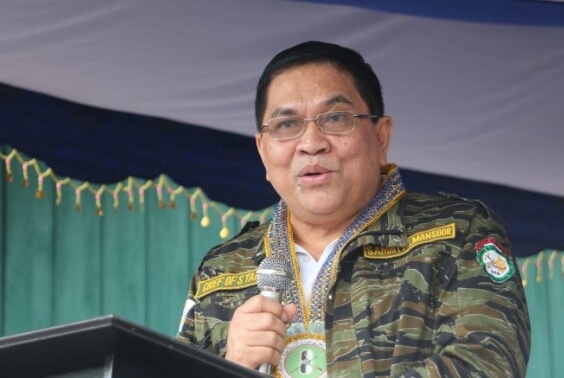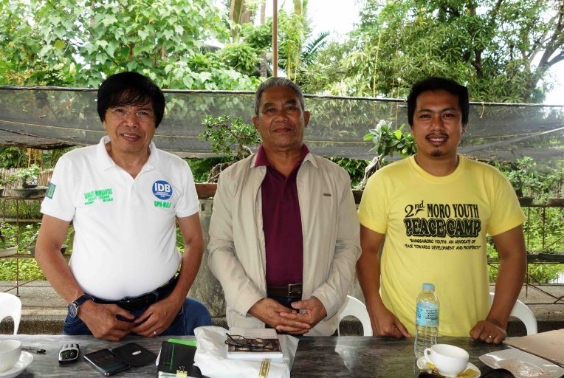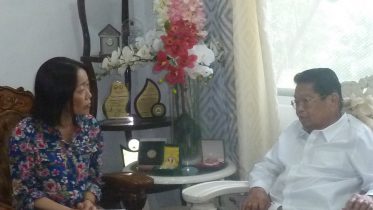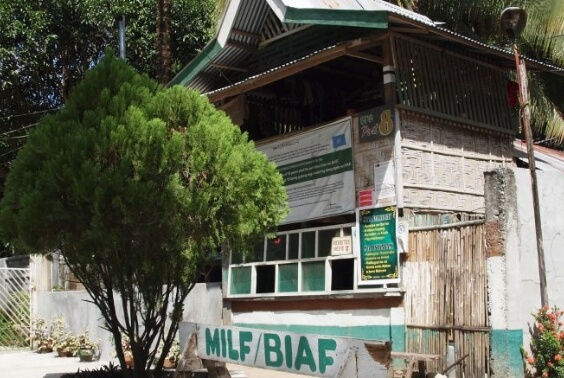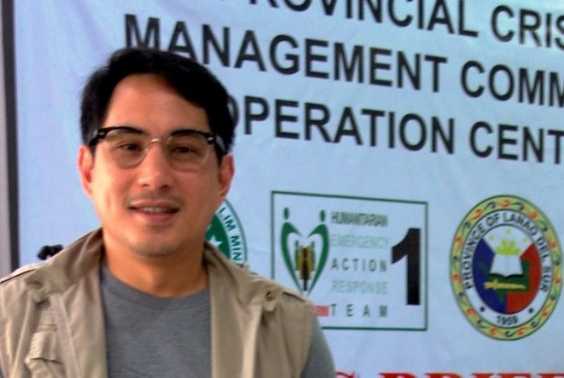- SOUTHERN PHILIPPINES
The Mindanao Conflict and the Direction of the Peace Process: A Sulu Refugee Perspective
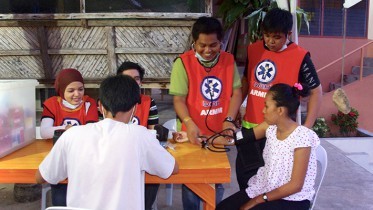
This article will consider the conflict and the peace process on Mindanao between the Muslim ethnic minority and the government in the southern Philippines, with a particular focus on refugees from the Sulu Archipelago.
In the Philippines, although Christians account for over 90% of the total population, about 5% to 7%, or an estimated 4 to 7 million people, who are concentrated on the southern island of Mindanao and the Sulu Archipelago, live as Muslims. A precise classification of the Philippines’ Muslims produces 13 or so ethnic groups with different languages or customs, but often they are generally referred to with the all-inclusive terms Moro or Bangsa Moro (meaning “Moro people”) due to their shared Islamic faith. These Muslims of the southern Philippines resisted Spain’s attempts at colonial rule up until the end and maintained their independence until the close of the 19th century. Due to this historical background and religious differences, the Muslims of the Philippines still differentiate themselves from the majority Christians (Christian Filipinos) on the central and northern islands of the Philippines—such as Luzon and the Visaya Islands—as a minority with a different and unique identity. Furthermore, even among the Muslims of the southern Philippines who are lumped together as Moro, while peoples like the Maguindanao and Maranao primarily reside on Mindanao, the Tausug, Sama and other peoples on the Sulu Archipelago who are the topic of this article could be considered the primary ethnic groups (Tokoro 1999).
The background and current state of the Mindanao conflict
This section will touch on the background and course of the Mindanao conflict that is presently ongoing. Until the end of the 19th century, the Muslims of the southern Philippines lived their lives under the rule of independent Muslim kingdoms, such as the Sulu Sultanate. As they entered the 20th century, however, the United States, having gained control over the Philippines from Spain as a result of the Spanish-American War, turned the Philippines, including Mindanao and Sulu, into a colony. Following this period of American colonial rule and Philippine independence thereafter, a large number of Christian farmers were sent to Mindanao as immigrants under the government’s domestic relocation policy.
As a result of this relocation policy, the Muslims of Mindanao had their land stolen by the Christian farmer immigrants and they were forced into social marginalization and impoverishment. Then, from the late 1960s to the beginning of the 1970s, the conflict that began as a territorial fight between the Christians transplanted to Mindanao and the Muslim residents gradually escalated into an armed conflict (Tokoro 2012:100, Tokoro 2015).
With these circumstances as the backdrop, the Moro National Liberation Front (MNLF), a Muslim separatist organization led by Nur Misuari, a man from the Sulu Archipelago, was formed in the early 1970s.
The MNLF received funds and arms, as well as the provision of facilities for training and launching attacks, from the likes of Colonel Gaddafi of Libya and Tun Mustapha of Malaysia (then the governor of the state of Sabah). The group used these resources to engage in armed battles with the goal of seceding from the Philippines, and in the first half of the 1970s there were continuous armed clashes throughout the southern Philippines between the MNLF and the Philippine Army. Then President Marcos instituted martial law in 1972, one reason being the political instability caused by the MNLF’s activities, but the fighting spread, as exemplified by the destruction of urban Jolo in the central area of the Sulu Archipelago in 1974.
Later, following peace negotiations mediated by the Organisation of the Islamic Conference (OIC; name later changed to Organisation of Islamic Cooperation) and Indonesia, in 1996 the Ramos administration and the MNLF concluded a final peace agreement (FPA). Under its terms, a high level of autonomy would gradually be established in certain parts of the southern Philippines with the support of the central government, in exchange for the MNLF reaffirming that it had given up on secession (Tokoro, 2012:101). However, even after the transition period envisioned by the FPA expired, the establishment of high-level autonomy guaranteed in the initial agreement was not carried out, and inevitably the peace process experienced reversals, such as renewed fighting between the MNLF and the government in 2001.
Meanwhile, the MILF (Moro Islamic Liberation Front), a splinter group of the MNLF, continued operating as the largest Muslim separatist group based on Mindanao. The government and the MILF also achieved a certain amount of progress later on with a peace process mediated by the Malaysian government and other parties. The result was that in October 2012, the MILF and the Philippine government came to an agreement founded on the Framework Agreement on the Bangsamoro (FAB), and in March 2014 both parties signed the Comprehensive Agreement on the Bangsamoro (CAB).
While this peace process was making progress, backward steps were still being taken elsewhere. For example, even after the 2000s armed groups like the Abu Sayyaf Group (ASG)—said to have ties to al-Qaeda, Jemaah Islamiya and other foreign Islamic terrorist groups—committed acts such as kidnappings and assaults on security forces in places like the Sulu Archipelago and Basilan, as well as the state of Sabah on the eastern coast of Malaysia. Furthermore, in recent years various armed groups have gained prominence by interfering with the peace process, such as the MNLF-MG (MNLF Misuari faction) led by Nur Misuari that “fell off the ladder,” so to speak, as the peace process between the MILF and government progressed, and the Bangsamoro Islamic Liberation Front (BIFF), a MILF splinter group.
Particularly noteworthy is the Sabah incursion (described below) from February to March 2013 by a group calling itself the Royal Security Forces of the Sultanate of Sulu. This event forced many Filipino Muslims living in Sabah back into refugee status due to clashes between the group and the Malaysian government’s security forces. Furthermore, in fighting between the MNLF-MG and the Philippine army in the city of Zamboanga on Mindanao in September of that year, local residents endured continued hardship, such as the more than 110,000 who were turned into refugees.
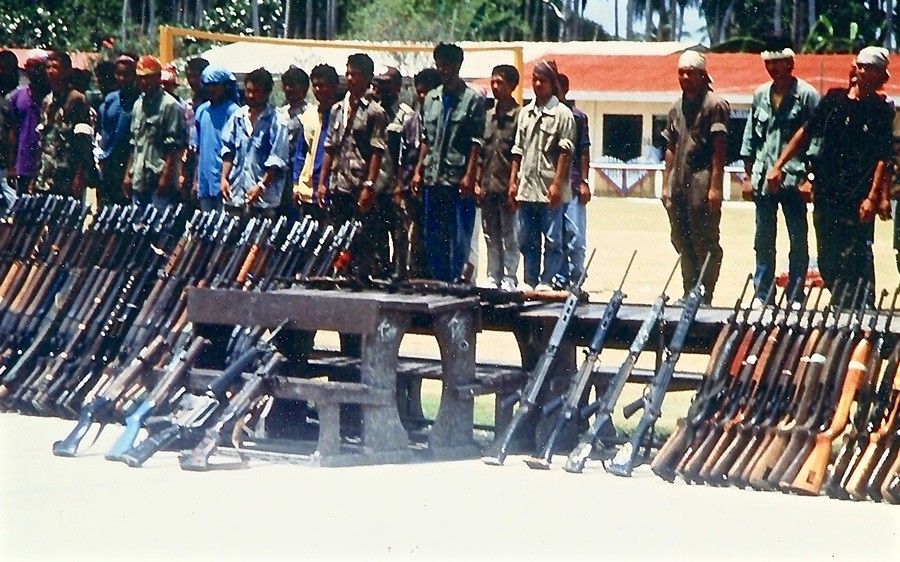
The status of foreign refugees fleeing to Sabah, Malaysia
A loose estimate is that the armed fighting with the government in the Mindanao conflict has thus far produced over 150,000 deaths and a flood of refugees exceeding 1 million in number (including internally displaced persons). Of these, the majority of Muslim citizens who have fled overseas have flowed into the Malaysian state of Sabah as refugees. Muslim citizens have been relocating and migrating to Sabah from the southern Philippines since the late 1970s, but since that time they have often been talked about in the context of migrant workers moving or migrating across borders for economic reasons, rather than as refugees in the strict sense of the term. However, the author believes that it is not necessarily appropriate to neatly classify the flow of people from the southern Philippines to Sabah as either refugees or immigrants, but rather that there is an overlap accompanying a sort of continuity under the actual circumstances.
Filipinos in the flow of people from the southern Philippines to Sabah, Malaysia who have been officially recognized in Malaysia as refugees (pelarian) in a strict sense are estimated by the Sabah state government to have numbered around 70,000 people as of the 1970s, while the UN’s estimate is around 100,000. In response to the influx of Filipino refugees to Sabah in the 1970s, the United Nations High Commissioner for Refugees (UNHCR) took action including refugee assistance programs, and simple settlements for Filipino refugees (also referred to as “refugee villages”) were set up with UNHCR support along the eastern coast of Sabah. The initial purported purpose of this action and of the “Filipino Market” in the city of Kota Kinabalu was to help the Filipino refugees find work.
Sabah incursion by the Sulu Sultanate and Filipino Muslim “two-time refugees”
This section will address the reversal in the flow of people who primarily had set out for Sabah from the southern Philippines, which was caused by the armed clashes that broke out recently in Sabah. To put it another way, the flow of relocating Filipino Muslims who have streamed into Sabah as refugees (or immigrants) for the past 20-plus years has reversed itself, and now these people were flowing back to the Philippines, their original homeland, as (two-time) refugees from Sabah. That is to say, this phenomenon should be described as Muslim Filipinos becoming two-time refugees, and this is the topic the author would like to cover here.
The renewed refugee status discussed in this section was caused by armed clashes occurring in Sabah in February and March 2013. Basically, the chain of events began in the first half of February 2013, when a group calling itself the Royal Security Forces (RSF) of the Sultanate of Sulu (originating from the southern Philippines; led by the younger brother of Kiram III, a descendent of Sulu Sultans who once ruled the Sulu Archipelago) made landfall in the Lahad Datu district on the east coast of the state of Sabah in eastern Malaysia, where they occupied a small fishing village called Tanduo. When the incident initially broke out, the Malaysian government’s security forces encircled the RSF soldiers occupying the village and engaged in a long standoff, but later, beginning on 1 March, the situation developed into fighting between the group and the Malaysian security forces. Some points about the background leading up to this incident are still unclear, but whatever the case may be, the armed clash sparked repercussions from Lahad Datu to Semporna and elsewhere along the eastern coast of Sabah. In the process the situation escalated, with the Malaysian Army engaging in large-scale military operations including aerial strikes, and the UN Secretary-General called for a cease-fire.
During the period up until late March, when the situation had mostly calmed down, this incident produced over 70 deaths, while its effect was to make territorial disputes in Sabah—one of the factors behind the incident—arise as part of the political discourse and agenda and to strain the relationship between the Philippines and Malaysia. Within the context of this piece, the key thing is that the authorities cracked down on the activities of Filipino Muslims living in Sabah (who were suspected by Malaysian security forces as being potential RSF sympathizers due to various incidents), resulting in the circumstances under which Filipino Muslims were fleeing en masse back to their original homeland in the Philippines.
To state this in more specific terms, following the March armed clashes in Lahad Datu, the situation led large numbers of Filipino refugees (among whom many were illegal immigrants) to escape the eastern coast of Sabah for the southern Philippines (Zamboanga, Jolo, Basilan, and Bongao in Tawi-Tawi Province) and elsewhere.
From the 1970s onward, the primarily flow of people was consistently moving in the direction from the southern Philippines to Sabah, but the fighting in Lahad Datu in March 2013 temporarily reversed that vector, and now a situation has arisen under which Filipino Muslims are leaving Sabah to return to the Philippines to avoid the fighting and the crackdown by the Malaysian government.
Soon after the armed clashes in Lahad Datu, the author conducted urgent fieldwork for two weeks or so in the Philippines, where he confirmed that the above-described phenomenon, which can be labeled either a “reverse flow of immigrants/refugees” or “the creation of two-time refugees,” is having no small effect on Muslim society in the southern Philippines as well.
As for the number of people who have returned from Sabah to the Philippines as two-time refugees, the number recorded by the Philippine government alone exceeded 20,000 people as of July 2013. However, this figure is only for officially recognized refugees who have been accepted into refugee facilities the Philippine government set up around the Sulu Archipelago and on Mindanao, and does not include those who escaped by boat or other means on their own to villages in the Philippines. Therefore, the true scale of the two-time refugee population is at least twice this number, with a lower estimate we can approximate reaching 40,000 to 60,000 people.
To further illustrate the situation for Filipino Muslims living in Sabah: as described above, there was an intensified crackdown on Filipino residents along the eastern coast of Sabah following the armed clashes that broke out in early March; one group among these Filipinos, the Tausug people, are the primary ethnic group within the RSF, and they were subjected to searches and other harsh checks throughout Sabah. In addition, the flow of refugees immediately following the fighting created refugee populations on many Filipino islands particularly near the Malaysian border that were larger than the populations of these islands’ actual inhabitants, and for a time the perpetuation of this situation led to food shortages and other serious problems suffered by the people.
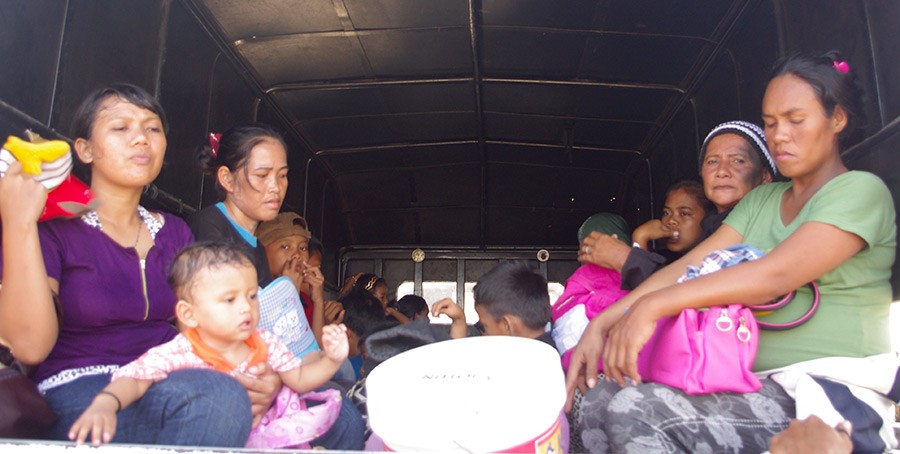
In response to this crisis situation, the Philippine government set up Evacuation Centres for refugees throughout the southern Philippines (in Sulu, Tawi-Tawi and Basilan provinces, in Zamboanga, and elsewhere). It also worked through the Philippine Department of Social Welfare and Development, provincial governments, the Red Cross and other entities to provide assistance for the refugees coming in from Malaysia. This included food and medical assistance, as well as coordinated returns to the refugees’ home islands and villages.
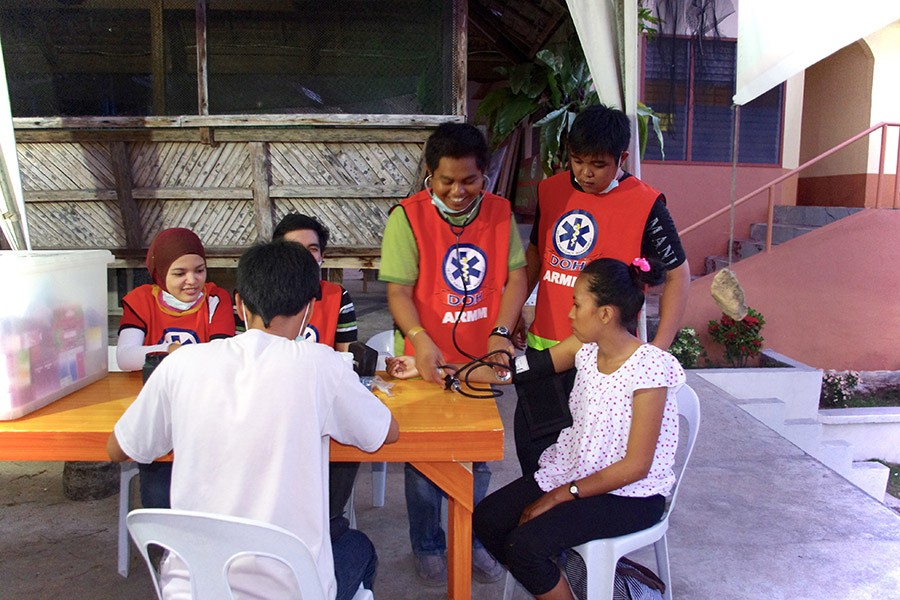
Regardless of this assistance, the author felt there are more than a few matters of concern regarding the refugees’ situation. The most prominent one is that although it is good that they could go back to the Philippines and escape the fighting and crackdowns in Sabah, many had no jobs after returning to their home village, and there is a long-term concern that this massive return of refugees from Sabah could hurt the economy of the southern Philippines.
Furthermore, the exodus meant that many of the younger refugees—the children and young adults—were setting foot in the Philippines for the first time in their lives. By conducting interviews in Zamboanga, the author was able to confirm that among these refugees who should have been “returning” to the Philippines from Sabah, there was a large share who, because they were born and raised in Sabah, spoke Malay as their primary language and were completely unfamiliar with Tagalog.
In addition, because, as described above, many of the children and young adults are “stateless persons” —that is to say, they are not registered in either Malaysia or the Philippines with a birth certificate or other such documentation— they are of course not Malaysian citizens, and it is exceedingly difficult for many of them to prove that they hold Philippine citizenship. Naturally, after these people return to the Philippines, find work (again) and gain employment, many are expected to run up against many number of difficult barriers.
In summary
As described above, events leading up to the Mindanao conflict in the southern Philippines and the refugees created by it include the flow of internal migration of Christians from the northern Philippines to the south. This flow began under American colonial rule at the dawn of the 20th century, and later was perpetuated as a transplantation policy until the end of the 1960s. This massive immigration and transplantation of Christians was a major factor behind the outbreak of the Mindanao conflict in the 1970s, and as a result of this conflict a large number of Filipino Muslims crossed over to Sabah as refugees. That is to say, the forced abandonment of Muslim residents’ lands and their transformation into refugees (immigrants) in Sabah were major trends from the 1970s onwards that resulted from the internal immigration policy of relocating Filipino Christian immigrants to Mindanao.
To rephrase this point, the flow of Christians to the southern Philippines was accompanied by hundreds of thousands of Muslim residents being pushed from their lands to Malaysia as immigrants/refugees, much like billiard balls. This flow of Muslim refugees and immigrants from the southern Philippines to Sabah, Malaysia, caused by this chaotic flow of immigrants/refugees, went primarily in one direction beginning in the 1970s and continuing on until 2012. In contrast, following the armed clashes between the RSF and Malaysian security forces in March 2013, an exodus has also been identified from Sabah, Malaysia to the southern Philippines (a channeling back or reverse flow) of Filipino Muslims who had been made into “two-time refugees.” Furthermore, fighting erupted between the MNLF-MG and the government in September 2013 in Zamboanga, Mindanao, where approximately 110,000 people, mostly Tausug and Sama, have become new refugees.
These trying circumstances experienced by the Muslims of the Sulu Archipelago, who unwillingly left their homes and had to relocate to different lands as refugees due to the chaotic tumult surrounding the Mindanao conflict and peace process, is a situation that is still likely to continue.
Ikuya Tokoro
Professor, Research Institute for Languages and Cultures of Asia and Africa
Tokyo University of Foreign Studies
Selected Bibliography
Tokoro, Ikuya 1999 “Crossing Borders: From the World of the Sulu Wates,” Iwanami Shoten.
Tokoro, Ikuya 2012 “Islam Today and Muslim Separatist Movements in the Philippines,” edited by Ikuya Tokoro, Ryoko Nishii and Yasuhiro Fukushima, Islam in Southeast Asia, Tokyo University of Foreign Studies Press, pp. 97-120.
Tokoro, Ikuya 2015 “The Re-emergence of Islam in the Context of Muslim Separatism in the Philippines,” Islam and Cultural Diversity in Southeast Asia, pp.153-174, Research Institute for languages and Cultures of Asia and Africa (ILCAA).


-
12月19日
Masako IshiiSOUTHERN PHILIPPINESMasako Ishii interviewed the top leader of the BIAF, the Chief of Staff, Mr. Sammy Al Mansour
In the Philippines, there used to be approximately four or five ISIS-affiliated groups. In 2017, the top leade
-
04月22日
Masako IshiiSOUTHERN PHILIPPINESMarawi Siege: Perspectives from the MILF North Eastern Mindanao Front Command
On May 23, President Duterte declared a state of Martial Law and suspended the privilege of the writ of habeas corpus in the southern Philippines to fight against the ISIS-affiliated “Maute group.”[1] The “Maute group” occupied a part of Marawi City, and heavy fighting between the Armed Forces of the Philippines (AFP) led to the destruction of the seized area. Five months after the proclamation of Martial Law, President Duterte declared that Marawi City had been liberated, and the termination of all combat operations in Marawi City was announced by Defense Secretary Delfin Lorenzana.
-
12月15日
Masako IshiiSOUTHERN PHILIPPINESThe Challenges Faced by the Bangsamoro Transition Commission in Drafting the New Bangsamoro Basic Law
On February 24, 2017, the renewed Bangsamoro Transition Commission was launched to draft the new Bangsamoro Basic Law (BBL), with the intention of establishing an Autonomous Government and replacing the current Autonomous Region in Muslim Mindanao. The BTC completed the task of drafting the BBL on June 16, 2017, and has submitted it to President Duterte on July 17. However, no major progress has yet been seen as of September 9, 2017.
-
11月29日
Rudy Buhay RodilSOUTHERN PHILIPPINESDecolonize the Philippines, adopt a new constitution
This article was originally published in The GRP, MILF Peace Drafts 2010: Analysis and Comments by Patricio P. Diaz・Rudy Buhay Rodil, MindaNews Publications 2010, pp.24-29, and quoted again in HOMELAND Vol. XXIV, No. 4 (July-August), 2017: 5-8. Though several years have passed since its first publication, we find that the insights this article offers are still valuable. Therefore, we republish it at this APBI website with the permission of the author to make it accessible to wider audience.
-
09月14日
Masako IshiiSOUTHERN PHILIPPINESInterview with Assemblyman Zia Alonto Adiong
Mr. Zia Alonto Adiong, an assemblyman of the Regional Assembly in the Autonomous Region in Muslim Mindanao, serves as the spokesperson for the Lanao del Sur Provincial Crisis Management Committee.




